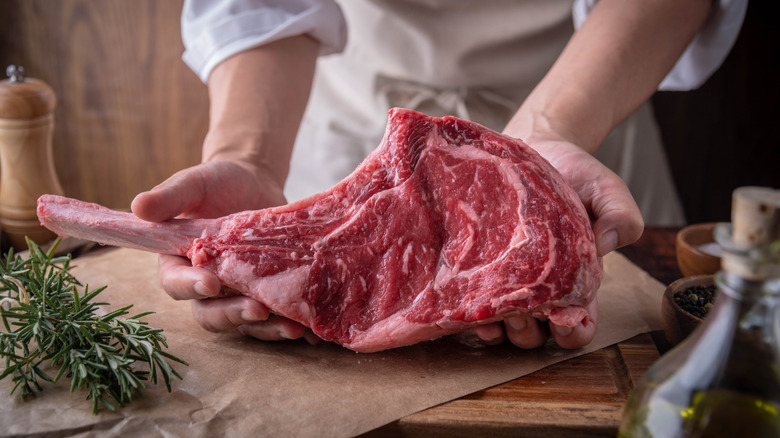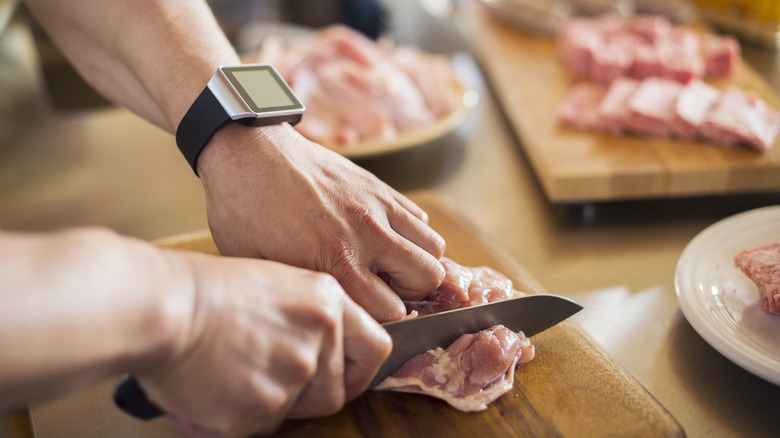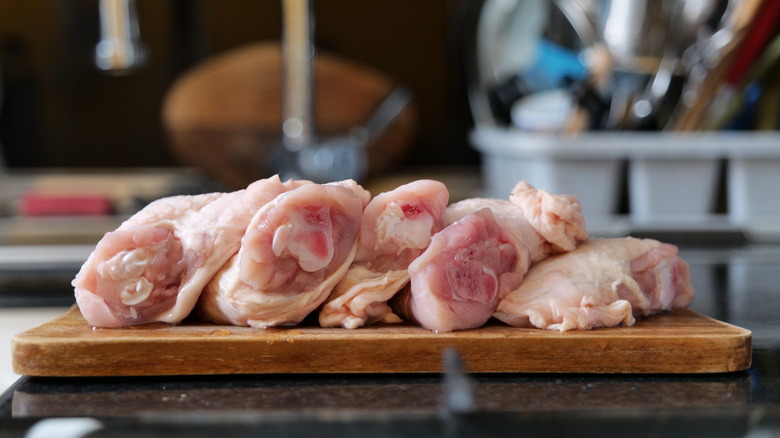Why You Should Be Slicing Meat, Not Sawing It
Juicy and savory slices of pork, chicken, and beef are some of the most crave-worthy proteins in the kitchen. While dishes that contain this drool-worthy fare — from sizzling lamb chops to braised beef short ribs – are often filling and delicious, excess fat and gristle can ruin the whole thing. To prevent a dinner disaster, always trim your meat before cooking to make sure you get rid of all those unnecessary bits. It might mean some extra work, but it shouldn't be much harder than a few slices of a knife, and it makes all the difference.
If you find yourself sawing at a slab of beef to get rid of the fat, you're probably doing it wrong. You should be slicing your meat, not sawing it. While excess fat can cling stubbornly onto cuts of chicken and lamb alike, you can slice off the excess without having to saw at it. If you feel yourself exerting more pressure on the meat than necessary and start to saw instead of cut, stop what you're doing and reposition your knife. The fat will come off much cleaner if you approach it from a different angle. Always remember to slice away from your body to avoid injury, and employ some of these techniques to efficiently cut any excess fat off of your raw meat.
How to properly trim fat off your meat of choice
While you might think that sawing the fat off of your meat is the only way to get the job done, this often leads to a messy-looking cut and is not as efficient as other methods. It also just means unnecessary excess exertion.
So, to properly trim your meat, start by sharpening your knife to ensure it's at peak efficiency. Then, pat your meat dry — so it won't slide as you slice — and place it on a cutting board. Gently pull on a piece of fat to expose the gap between it and the flesh beneath, making sure it's pulled taut. Now, begin making your cutting motion here. Use confident, smooth strokes so the fat will come off easily, cutting downward and away from your meat with the knife until the fat comes off smooth. Do this motion in small sections all around your meat until the fat is gone.
And that's all it takes. As with anything, this method of trimming might take some getting used to, but soon enough it will change your prep game for life. If you're new to the cooking world, that might not be the only prep step you want to change, too.
Another meat prep step you might be getting wrong
While novice chefs might be accustomed to fighting with their meat to try to cut off the excess fat, it's best to make a change to preserve the integrity of the protein. Additionally, there are some other things you should keep in mind about your meat prep.
Another common meat prep mistake is washing the meat before cooking it. There's a common debate about whether or not you should wash raw chicken or turkey before you cook it, as it's thought to remove excess bacteria. Well, this hack does not work. It actually ends up increasing the spread of bacteria as you are handling the meat more this way. Meat is already cleaned as it is processed, so skip this extra prep step and save yourself some time.
A lot goes into preparing a meal, so don't make it any harder by adding unnecessary steps or using the wrong techniques. It might be the difference between a truly successful supper and a culinary disaster.


